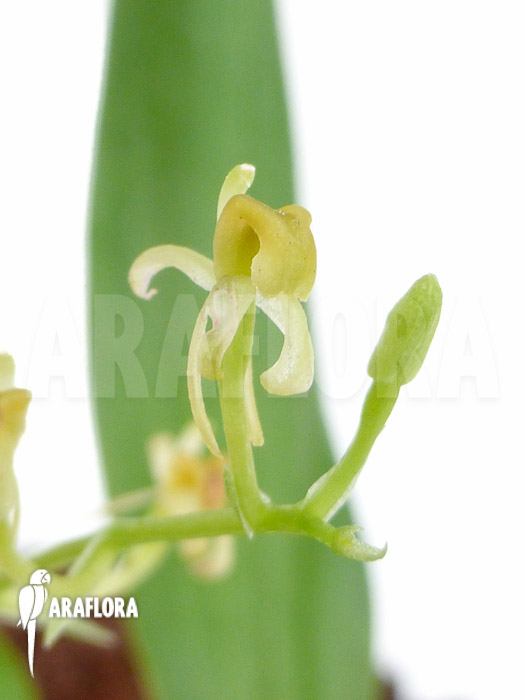Liparis nakaharai - Orchid296
Liparis nakaharai - Orchid296
Most orchids are found in South America and Indonesia, but Liparis nakaharai originates from the Japanese island Okinawa and Taiwan. The orchid has oval leaves of around 15 centimetre. The stems are slightly larger with an average length of 25 centimetre. In contrast, the flowers are much smaller. The lip of Liparis nakaharai isn't found at the base of the flower, but protrudes to the front before curling downwards.
Currently not in stock
€ 16,00
Keep me up to date?
Araflora will inform you as soon as the product is available again. Please fill in your e-mail address and we will let you know as soon as the product is back in stock. You will get an e-mail message when the product is available again. Unfortunately we cannot say how long this will be or what the price is likely to be.

Receive an e-mail when new stock of this plant arrives.
Share this plant? Press on one of the following icons.
Liparis nakaharai grows in the humid forests on the islands in the East China Sea. There, on Taiwan and Okinawa the orchid is relatively rare. So if you get one of these orchids, you're helping preserve them. The flowers of Liparis nakaharai won't get any bigger than 2 centimetre. They have a pale white colour with a slightly yellow lip. The lip grows from the front of the flower, resulting in a unique appearance.



Liparis nakaharai likes light, but shouldn't be kept in direct sunlight. In the winter it should get slightly more light. The ideal temperature for Liparis nakaharai is around 25⁰C, with slightly colder nights. Don't let the temperature drop below 15⁰C or rise above 30⁰C. The humidity should be quite high, around 80%. Raising the humidity at night will stimulate the production of flowers. For the best results, water the plant using rainwater or distilled water whenever the substrate dries slightly. In practice this will be watering three to five times a week. Together with a proper humidity, this will help prevent infections and disease. Orchid-mix will be a suitable substrate. You can also attach the plant to a piece of bark. You can find this and other components in our ‘Plant Accessories’ section. Make sure moisture is able to drain from it. Fertilize with caution. Old flowers can be cut from the plant.










 5 cm
5 cm
 5 cm
5 cm












